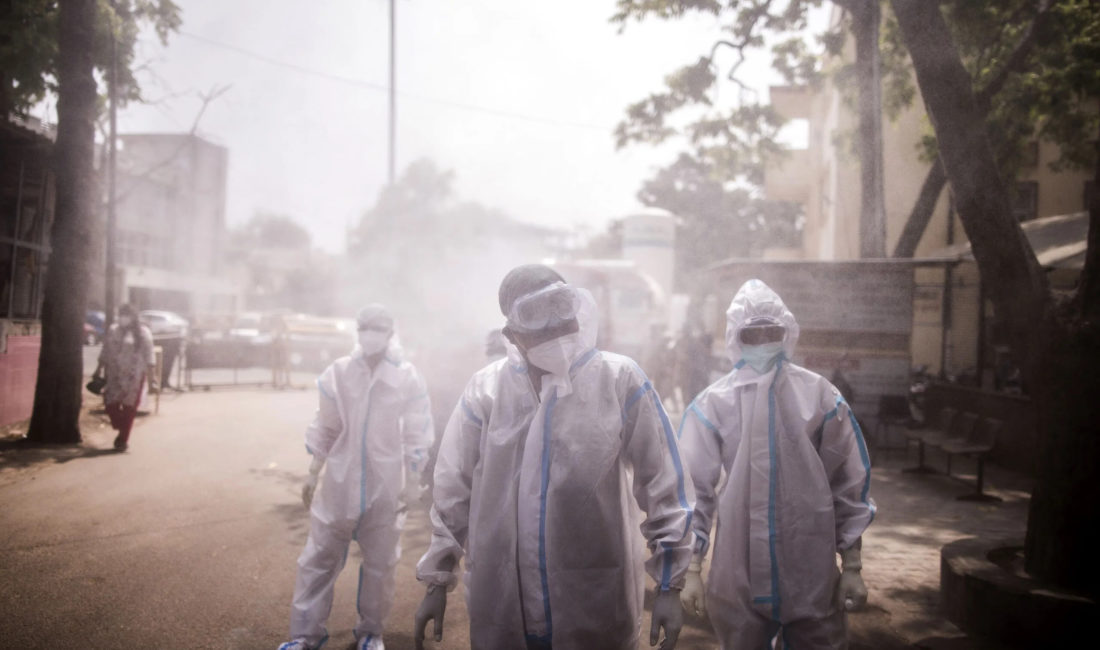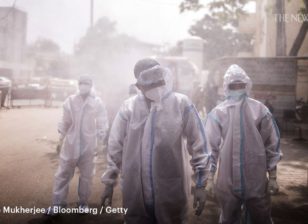The Politics Behind India’s COVID Crisis
Among the world’s autocratic populists, Prime Minister Narendra Modi, of India, is distinguished as a storyteller. He offers beguiling accounts of Hindu identity and Indian greatness, with the aid of allied newspapers and television networks, as well as on Twitter, where he has sixty-eight million followers and a phalanx of trolls. When the pandemic struck, last year, Modi summoned his loyal media barons and editors, who, according to the Prime Minister’s Web site, promised “inspiring and positive stories” about his government’s fight against the coronavirus. The country suffered tens of thousands of Covid-19 deaths in 2020, but forecasts of even more dire outcomes did not materialize. In January, at Davos, Modi boasted that India had “saved humanity from a big disaster by containing corona effectively.” He loosened restrictions and invited worshippers to the Kumbh Mela, a weeks-long Hindu festival that attracted millions of people. As spring arrived, he staged mass rallies during an election campaign in West Bengal, a state with a population of a hundred million. At a gathering on April 17th, he extended his arms and proclaimed, “Everywhere I look, as far as I can see, there are crowds.”
The coronavirus thrives off of complacent politicians. At the time of that rally, new infections in India, by official counts, had exploded to two hundred and fifty thousand a day, a figure that last week reached four hundred thousand. Shortages of oxygen and hospital beds have driven desperate citizens—and even hospital directors—to beg for help on social media. State police have threatened or filed preliminary criminal charges against some of those seeking aid, because the “rumours” they generate may “spoil the atmosphere,” as Yogi Adityanath, a Modi ally and the Chief Minister of Uttar Pradesh, India’s most populous state, put it. According to the Hindu, an English-language daily, he called for prosecutions under the National Security Act. On April 30th, India’s Supreme Court held that there should be no “clampdown” on those using social media to plead for oxygen or beds. Crematoriums are overwhelmed; photographs of makeshift funeral pyres have become iconic images of an unspeakable tragedy. Last week, at least a hundred and fifty people in India died of Covid every hour. The surge reflects many factors, including the fragility of the underfunded health system. But, as Meenakshi Ganguly, the South Asia director of Human Rights Watch, wrote last week, Modi’s government “appears obsessed about managing the narrative” rather than addressing urgent needs.
The Biden Administration and other governments have dispatched planeloads of small oxygen-making plants and vaccine ingredients to New Delhi, to bolster India’s vaccine industry. The aid is needed, but it alone cannot address the scale of India’s suffering. The pandemic has laid bare—and exacerbated—the contours of global inequality. The conditions incubating India’s outbreak also exist in other emerging countries, such as Brazil and Argentina, where thousands perish daily. In the U.S. and a few other wealthy nations, about half of all adults have now received at least one vaccine dose, and economies are reopening, whereas in much of the rest of the world it will require many months—perhaps a year or two—before vaccination rates are likely to rise enough to suppress the virus. India’s crisis will make that campaign longer, since to address its own emergency New Delhi has suspended vaccine exports to COVAX, a World Health Organization project established to assure equitable access to vaccines in low-income nations.


